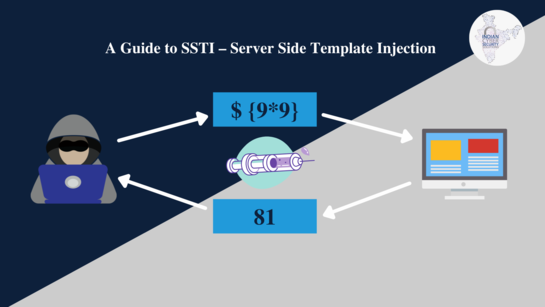
Server-Side Template Injection (SSTI) is a web application vulnerability that occurs when user-supplied input is directly embedded within a server-side template, allowing an attacker to inject and execute arbitrary code. This article explores the various exploitation techniques used to leverage SSTI vulnerabilities, highlighting the potential risks and providing insights into prevention measures.
Understanding Server-Side Template Injection:
Server-side templates are widely used in web applications to separate the presentation layer from the logic layer. They allow developers to dynamically generate HTML, XML, or other types of content by combining templates with data from the server. However, if these templates are not properly secured, an attacker can manipulate user-supplied input to execute unauthorized code on the server.
Exploitation Techniques:
Context-based Exploitation: One of the first steps in exploiting an SSTI vulnerability is to identify the context in which the user input is processed. Templates often have different syntax and functions depending on the framework or library being used. Understanding the underlying template engine is crucial for crafting the exploit. Common template engines susceptible to SSTI include Jinja2, Twig, Freemarker, and ERB.
Code Injection: Once the context is determined, an attacker can inject malicious code into the template. This code can vary depending on the target application and its purpose. For instance, an attacker might inject code to read sensitive files, execute operating system commands, or access the application's internal APIs.
- Template Engine Features: Exploiting specific features provided by the template engine can enhance the attacker's capabilities. This includes accessing internal variables, functions, and objects within the template engine's environment. For example, in Jinja2, an attacker can access the
object, which often contains sensitive information such as database credentials.config Template Chaining: Sometimes, a single SSTI vulnerability might not provide sufficient access to sensitive data or functionality. In such cases, attackers can chain multiple SSTI vulnerabilities together to escalate privileges or gain deeper access. By leveraging the output of one vulnerable template as input to another, an attacker can traverse through the application's code and reach their desired goal.
Mitigation and Prevention:
Input Validation and Sanitization: Developers should implement strict input validation and sanitization techniques to prevent malicious input from being processed within templates. This includes validating the data type, length, and format of user-supplied input.
Context-aware Output Encoding: To mitigate SSTI vulnerabilities, it is essential to encode output appropriately, depending on the context where it is being rendered. Employing context-aware output encoding functions can help prevent code injection by rendering user input as data rather than executable code.
Security Testing and Code Review: Regular security testing and code review should be conducted to identify and address SSTI vulnerabilities. Automated scanning tools, along with manual code inspection, can help uncover potential security flaws and implement necessary fixes.
Keep Frameworks and Libraries Updated: Maintaining up-to-date versions of frameworks and libraries that utilize template engines is crucial. Developers should regularly check for security patches and updates to address any vulnerabilities reported in the template engine or associated components.
Conclusion
Server-Side Template Injection (SSTI) vulnerabilities can have severe consequences, allowing attackers to execute arbitrary code and compromise web applications. By understanding the exploitation techniques involved, developers and security professionals can implement effective mitigation strategies to prevent SSTI attacks. Regular security testing, input validation, output encoding, and keeping frameworks updated are essential practices to safeguard against SSTI vulnerabilities and ensure the security of web applications.




